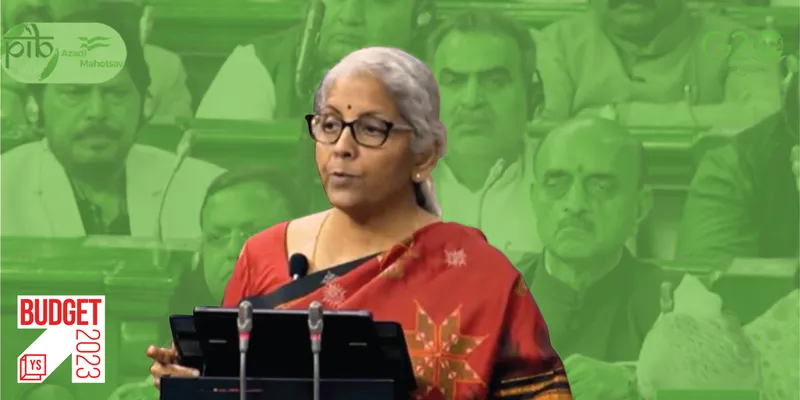Prioritising infrastructure investment, Budget 2023 increases capex by 33%
Finance Minister Nirmala Sitharaman said the capital investment outlay for 2023-24 was thrice that in FY20, and would be 3.3% of the GDP.
Budget 2023 put infrastructure investment in focus as capital expenditure for the coming financial year has been shot up by 33% to Rs 10 lakh crore. The capital investment outlay is now proposed to be 3.3% of India's GDP.
“This substantial increase in recent years is central to the government’s efforts to enhance growth potential and job creation, crowd-in private investments, and provide a cushion against global headwinds,” Finance Minister Nirmala Sitharaman said in the Parliament.
The capital investment outlay for FY 2023-24 is expected to be three times as in 2019-20. To put things in context, capex was Rs 7.5 lakh crore in the current financial year, Rs 5.4 lakh crore for FY22, and Rs 4.39 lakh crore in 2020-21.
The government has accorded 'Infrastructure and Investment' a top priority for the upcoming fiscal year, and called it one of the seven 'Saptarishi'—a reference to ancient sages—guiding the country through the Amrit Kaal.
“Investments in Infrastructure and productive capacity have a large multiplier impact on growth and employment,” the finance minister said. She also noted that private investments have started to grow again after the pandemic slump.
With a focus on job creation, the Budget has also made provisions for infrastructure investment by states through Grants-in-Aid. This brings the effective capex by the central government to Rs 13.7 lakh crore—4.5% of GDP.

Investments in infrastructure
The finance minister allocated Rs 1.3 lakh crore to extend the 50-year interest-free loan to state governments for another year with an aim to spur infrastructure investment accompanied by complementary policy actions.
The outlay for PM Awas Yojana, a government initiative to provide affordable housing to the urban poor, has been increased by 66% to over Rs 79,590 crore from Rs 48,000 crore budgeted in FY23.
The Budget has matched step with the government's focus on the PM Gati Shakti National Master Plan launched in 2021. The aim is to improve multimodal connectivity and logistics efficiency through transport infrastructure development in roads, airports, ports, mass transit systems etc.
To fund megaprojects, a capital outlay of Rs 2.4 lakh crore has been allocated for the railways—the highest ever outlay yet, according to the minister. Further, Rs 75,000 crore (including Rs 15,000 crore from private sources) would be used to fund 100 critical transport infrastructure projects encompassing sectors including coal, steel, fertiliser, and food grains, along with port connectivity.
The government will additionally revive 50 airports, heliports, water aerodromes, and advanced landing grounds to improve regional air connectivity.
The private investments will be overseen by the newly-established Infrastructure Finance Secretariat in the Department of Economic Affairs, while an expert committee will also be set up for recommending the classification and financing framework.

Urban planning
The government also proposed to establish an Urban Infrastructure Development Fund (UIDF) to create urban infrastructure in Tier II and III cities through priority sector lending shortfall. The allocation of Rs 10,000 crore per annum will be managed by the National Housing Bank.
The FM also announced plans for sustainable cities, property tax governance reforms, and ring-fencing user charges on urban infrastructure to improve their creditworthiness for municipal bonds, 100% mechanical desludging of septic tanks and sewers, and enhanced focus on scientific management of dry and wet waste.
Tourism
Budget 2023 also proposed to make border villages through tourism infrastructure and offering amenities to be facilitated under Vibrant Village Programme. The government also aims to facilitate states to set up Unity Malls to promote and sell their own ODOPs (one district, one product), GI products, and other handicraft products.
Edited by Kanishk Singh









